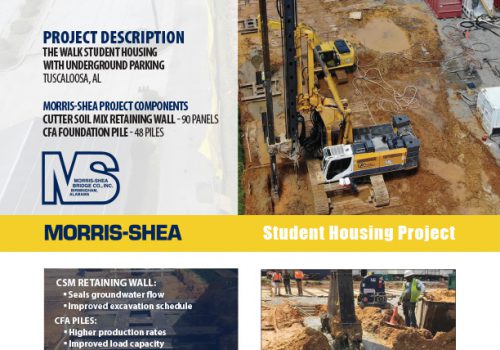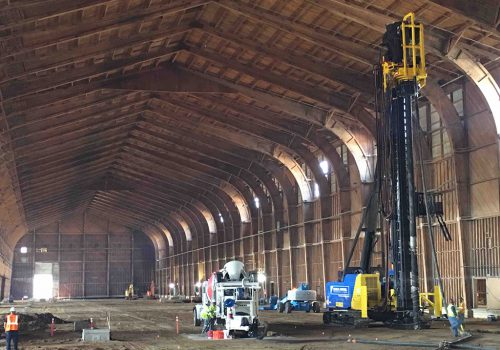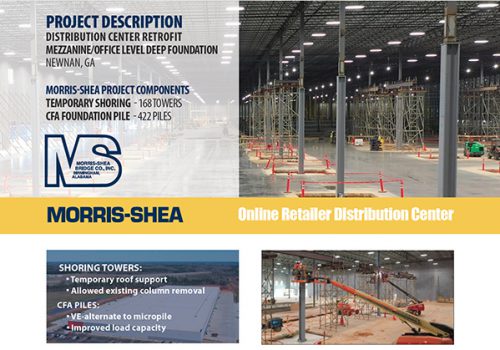Morris-Shea Project Components:
Deep Foundation, Patented DeWaal Drilled Displacement Pile
Performance results of drilled displacement piles:
– Reduction of material costs.
– Increase in production rates.
– Improvements in load capacity.
– Ideal use on floors of different characteristics.
Engineering
redesign : The foundation redesign for the shipyard project incorporated high capacity DeWaal drilled displacement piles and a concrete design for a more efficient foundation, reducing project cost and time. The original plans and specifications called for about 1,100 20-inch diameter EA driven tubular piles, resulting in a very expensive foundation and long lead-time for pile material. In turn, a precast concrete pile driving option was considered, but this also had similar cost and time disadvantages. The Morris-Shea redesign was able to reduce the number to 700 DeWaal piles and the number of pile heads significantly.
Foundation installation:
The DeWaal pile system consists of a system of drilled, full-displacement, cast-in-place piles. It is installed with powerful fixed mast drill rigs capable of applying high torque and thrust forces to the exclusive DeWaal tool. Installation of this patented system was done in a one-step process that densified the soil, improved shaft friction, and increased overall pile capacity. The DDP DeWaal system was ideal for installation on a construction site with shallow groundwater and low and medium density soil profiles. This field-proven pile eliminated certain pile drive concerns, such as noise and hammer vibration, associated with driven tube piles.
Testing in the area:
The load testing program demonstrated that the DeWaal piles clearly meet the project design requirements, while significantly reducing cost and time compared to the original design. The geotechnical engineer conducted the original project research and assisted with the planning and implementation of the additional cone penetration testing (CPT) and the Morris-Shea pile load testing program. Morris-Shea conducted 32 CPT soundings at the site with depths ranging from 65 to 100 feet. The CPTs provided an accurate delineation of subsurface soil conditions and specifically defined the elevation of the dense sand bearing layer. DeWaal piles were installed and load tested on each of the three new large structures at the site. The lengths of the test piles varied according to fluctuations in depth to the dense sand layer.
Subsurface conditions:
The soil at the construction site had highly variable characteristics. The depth of the dense sand roll layer fluctuated 65 to 80 feet below ground level and often changed rapidly over short distances. The final lengths of the piles at this site varied as much as 25 feet on the same structure.





